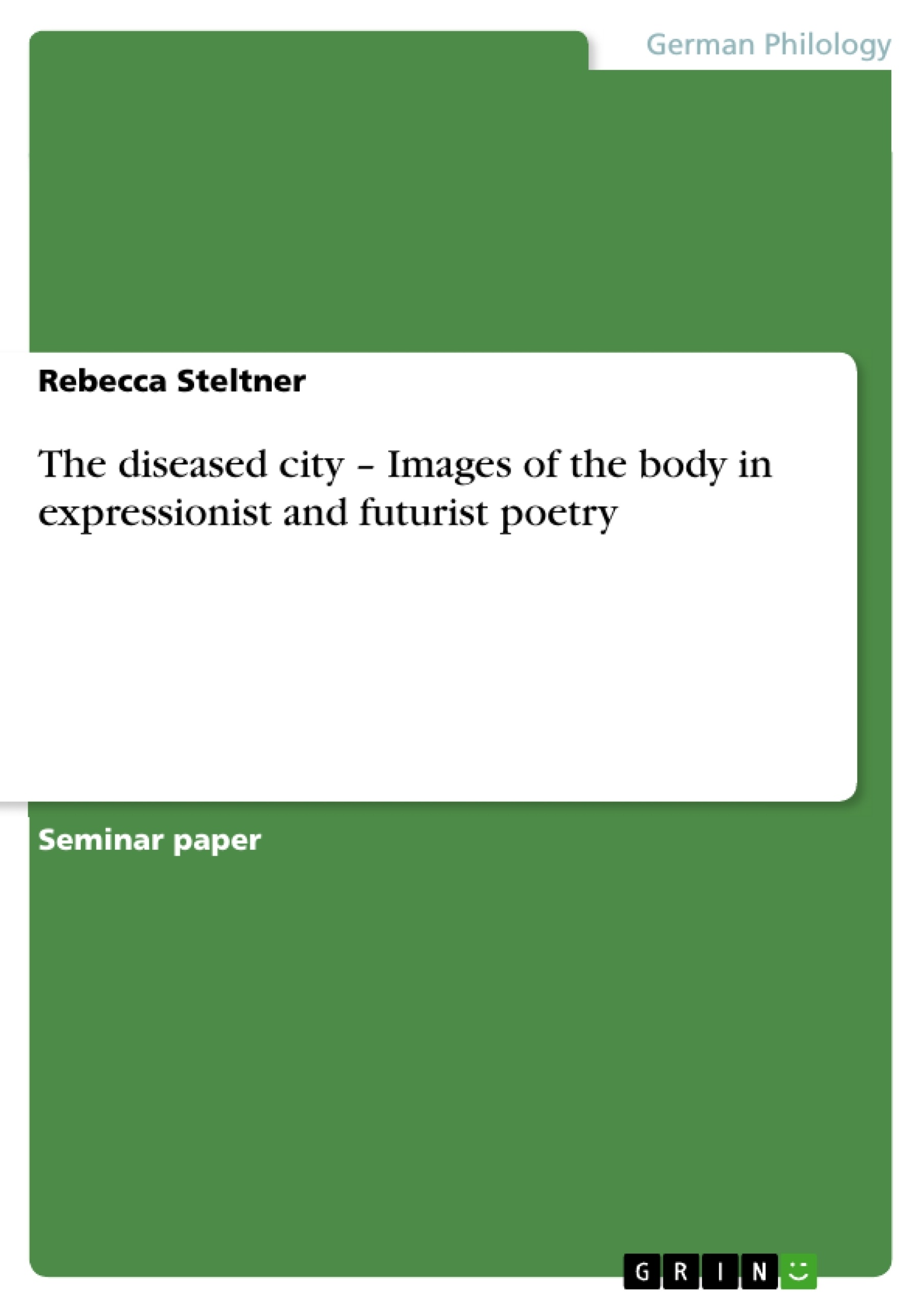Where the Futurist’s City Symphony is a celebration of ‘the Joy of Mechanical Force’, the Expressionist’s is dark and apocalyptic. Cities in this poetry are centres of disease and disgust. They are industrial to the extent that they are equated with factories as pars pro toto. Life in the country-side or in the city could not be more different or the rift between the rich and the poor greater. R.H. Thomas comments that between 1890 and 1912 production in Germany was already industrial, whereas society was still far from industrial. The reason being, that in Germany industrialisation set in much later than in the UK and was compressed into just three decades.
It is a time when the cities were ‘reborn’ and the images of the city changed dramatically, some of which I want to argue still exist in our common imaginary today.
There are several fields of images that contribute to the representation of the city, they are: apocalyptic visions of technology and the decaying body, disease and sexuality, but also the Ich-Zerfall (ego-decay) can be seen as being triggered by the experience of the city as Simmel elaborates and when the Expressionist poets write about nature, it only really exists in relation to that city whose red smoke always lurks in the background, its smoke can be tasted everywhere.
The city is the main theme of all these poems not just the backdrop and they address city issues directly. However, much has been written about the representation of the city in connection with technology, factories and alienating working conditions, which lend themselves to a Marxist analysis. This is not what interests me here, instead I want to approach the city on a sideway, using sociological theory of the body as put forward by Turner and Benthall and later explore the links between ‘body aesthetics’ and ‘machine aesthetics’ and see where they overlap.
Inhaltsverzeichnis (Table of Contents)
- The Diseased City - Images of the Body in Expressionist and Futurist Poetry
- The Diseased, Decaying and Deformed Body
- The Dead City
- The 'Gods' of the City
Zielsetzung und Themenschwerpunkte (Objectives and Key Themes)
This essay explores the representation of the city in Expressionist and Futurist poetry, focusing on how the imagery of the body, particularly disease and decay, reflects the social and psychological anxieties of the time. By examining how the city becomes a metaphorical embodiment of the diseased body, the essay provides a new perspective on these poems, challenging traditional readings that focus solely on technology and alienation.
- The city as a representation of a diseased and decaying body
- The influence of sociological theory on the interpretation of body imagery
- The relationship between "body aesthetics" and "machine aesthetics"
- The role of medical discourse in describing social problems
- The city's daemonic character and its relationship to human life
Zusammenfassung der Kapitel (Chapter Summaries)
- The Diseased, Decaying and Deformed Body: This section examines the use of body imagery in Expressionist poetry, arguing that the depiction of disease and decay reflects the social and psychological anxieties of the time. It analyzes how the city becomes a metaphorical embodiment of the diseased body, drawing on sociological theories of the body to support its analysis. The section explores how the medical language used to describe the city reflects broader anxieties about social disorder and the consequences of rapid industrialization.
- The Dead City: This section delves into the representation of the city as a dead or ghostly place. It analyzes how the imagery of death and decay pervades the poems, highlighting the sense of alienation and despair that characterized urban life in the early 20th century. The section explores how the city's physical structures, such as houses and streets, are used to symbolize the decay and lifelessness of its inhabitants.
- The 'Gods' of the City: This section examines the daemonic character of the city as depicted in the poems of Georg Heym. It explores how Heym's imagery of giant, oppressive figures reflects the anxieties about power and control in the rapidly modernizing city. The section also contrasts Heym's depiction of the city's daemonic nature with Filippo Tomasi Marinetti's more celebratory view of the city in his Futurist poetry.
Schlüsselwörter (Keywords)
Key terms and concepts that define this work include: body imagery, disease, decay, city, Expressionism, Futurism, social pathology, industrialization, alienation, daemonic, organic analogy, medical discourse, body aesthetics, machine aesthetics.
- Citation du texte
- MPhil Rebecca Steltner (Auteur), 2004, The diseased city – Images of the body in expressionist and futurist poetry, Munich, GRIN Verlag, https://www.grin.com/document/57423



